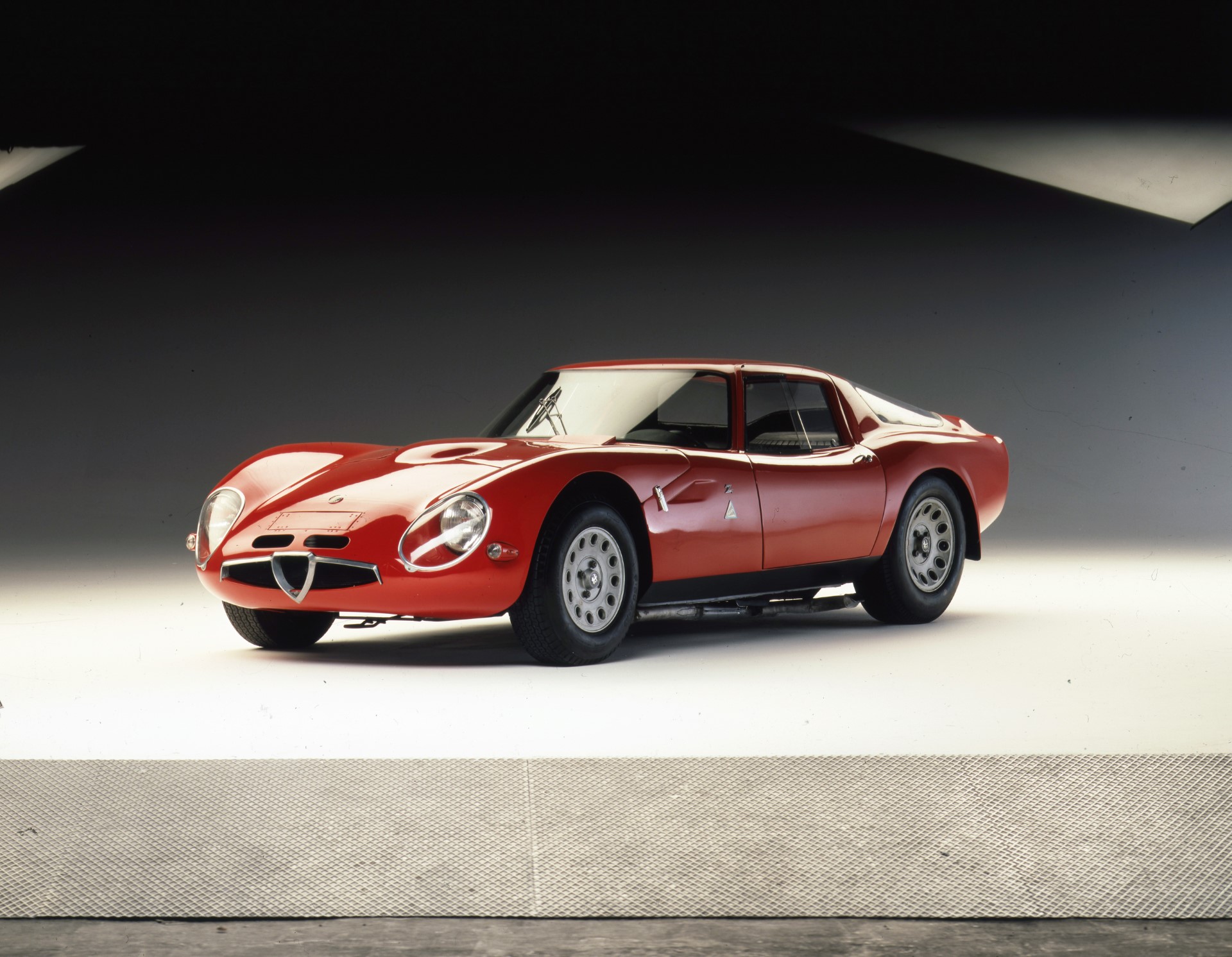Duet in design: The Sixties
19 August 2023 2 min read 2 images

How Pininfarina and Zagato revolutionised the shape of the automobile.
Pininfarina and Zagato are the undisputed design stars in the history of the Italian automobile. Numerous icons of today's Classic Cars show their signature and this history continues: Today, simulators from the design kitchen of Pininfarina and Zagato are the key to the virtual world of Classic Cars on Roarington. In a new series, we take a look back at the heyday of Italian car design and show two icons each from Pininfarina and Zagato, arranged by decade. In our third instalment of this series, we are in the 1960s and show the Ferrari 250 SWB produced in the early decade and designed by Pininfarina and the 1965 Alfa Romeo TZ2 by Zagato.
Ferrari 250 SWB: Masterpiece of motorsport
According to a theory of Ferrari evolutionism, the genealogy of the 250 'Berlinetta Competizione' type starts with Pininfarina's 340 Mille Miglia Speciale from 1952, with its peculiar shape that lead to the creation of a precise brand identity and a close and prolific collaboration with the Grugliasco coachbuilder. One of the most famous and representative cars of the close relationship between Pininfarina and Ferrari is undoubtedly the Ferrari 250 Short Wheel Base. Shown for the first time at the Paris Motor Show in October 1959, it perfectly epitomises the idea of a road-legal car capable of winning races. In 1959, the Ferrari SWB took on the challenge of a new design: Pininfarina conceived a shape with barely noticeable rear wheel arches, a rounded tail and a massive front end. The ‘SWB’ (short-wheelbase) designation came from a chassis that was 200mm shorter than the standard 250GT, which was one of the key factors in making the car one of the most successful Ferraris in the history of motorsport. It was an eclectic car, expressed both in the 'Corsa' version with aluminium bodywork and in the 'Lusso' trimmed with steel and leather. Designed with a bodywork that is widely considered Pininfarina’s finest masterpiece (constructed by Scaglietti), the 250GT SWB’s engine was Ferrari’s light and compact Colombo-designed 3.0-litre V12. The Ferrari 250 SWB is a clear example of Pininfarina's design philosophy. It is a car with perfect proportions, with clean and simple but extremely effective aerodynamics: compact, slender, agile and well-proportioned. It has an elegant and pure shape, yet its forms immediately communicate its sporty character.

Alfa Romeo TZ2: Historically relevant creation
The Alfa Romeo TZ2 is one of Zagato's most historically relevant creations concerning racing Grand Touring cars. This typology of cars differed greatly from the road-going GTs, which were fully oriented towards a more luxurious purpose. Racing GTs were true racing cars, no longer equipped with little comfort features (like leather seats, fabric upholstery, car radios), but characterized by extremely sophisticated mechanics, the use of lightweight materials, sketchy upholstery, top performance and no concessions to comfort. The idea of creating a fast racing Alfa Romeo car with a tubular chassis was hatched in 1959. Taking an Alfa Romeo SZ Coda Tonda as a prototype base, Zagato introduced a new concept of sports aerodynamics in 1960, inspired by the theories developed in the 1930s by German theorist Wunibald Kamm. Thanks to the car's new design, which featured a more elongated body with a high, truncated tail and a shape greatly reduced the vehicle's air resistance, the new Alfa Romeo SZ Coda Tronca could reach a top speed of 215 km/h (15 km more than the previous 'round' tailed Alfa). The evolution of this SZ was the Giulia TZ (the name stands for Tubolare Zagato), introduced in 1963. The Alfa Romeo Giulia TZ2 arrived in 1965 and replaced the TZ as its most powerful and fastest example: compared to its ancestor it was lower, wider, more aggressive in style and even lighter. Thanks to the bodywork made from fibreglass instead of aluminium, weight dropped even further: from 660 to 620 kg. Zagato’s aim was to build a racing car that was light but rigid, with effective, streamlined aerodynamics and a powerful engine. The tubular chassis helped keep the weight down by guaranteeing the structural rigidity needed for racing. The Alfa SZs and TZs put the Alfa Romeo brand back at the top of the racing world by winning at Le Mans, Sebring, Monza, Targa Florio and even Australia.

CLASSIC CAR MATCHER




